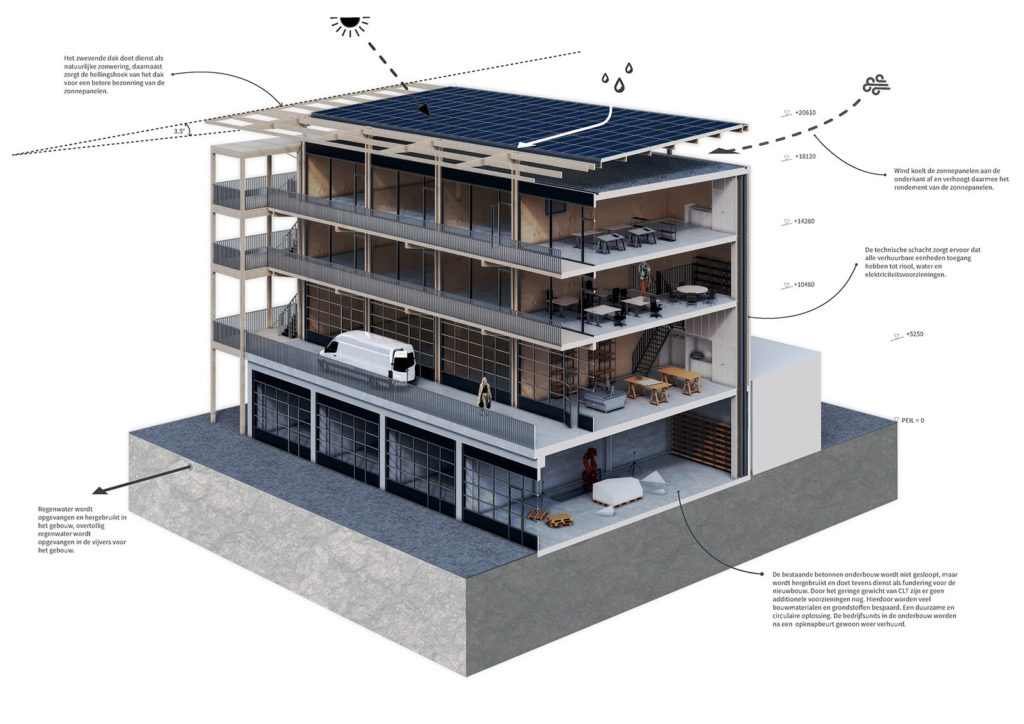
The Municipality of Haarlem may be the first municipality in the Netherlands in some time where a fully timbered and self-sufficient multi-layer business building will be realized.
The innovative, three-story building with a GFA of 2,375 M2 is currently a feasibility study and is an initiative of the circular MAAK Haarlem business park and the start-up Hamlet Design + Build Technology. Hamlet focuses on designing and building high-rise buildings based on CLT (cross-laminated timber).
The fully circular building will be placed on top of an existing concrete substructure. The first building layer provides 8 affordable business spaces of an average of 90 m2 with the target group of innovative and circular production companies. The second and third floors contain a total of 16 studio studios for creative professions such as industrial designers and software developers. A number of units can be coupled both vertically and horizontally, making growth within the building possible.
Because the building is completely erected in wood, there is CO2 storage (840t) instead of CO2 emissions, as is common with a concrete or steel construction. In addition to CLT for walls, floors, and roof, Siberian larch is used. For the finish of the side and rear facades, anthracite-colored Kingspan Evolution panels have been chosen.

Energy supply
In the plan, the roof construction is provided with 700M2 PV panels that are connected to an electrolyser with which the overcapacity of the PV panels will be converted into hydrogen. A fuel cell ensures that the building is supplied with electricity on less sunny days and in the evening. For the realization of this system, there is a llaboration with the French company Powidian.
The energy system will also be equipped with a heat exchanger so that the total efficiency of the fuel cell can increase to above 90%. The extracted heat is stored in an underground water basin that will provide the heating for the building.
Half a million gallons of water
The ‘off-grid’ concept is further elaborated in the collection via the roof of more than half a million liters of rainwater per year, which is stored in two ponds that will become part of the further greening of the MAAK site. The rainwater will be used for flushing the toilets and for the greenery.
The concept will be further elaborated technically in the coming months.
In addition to this project in Haarlem, Hamlet Design + Build Technology is also preparing a number of housing projects in collaboration with developers.
Read the most up to date Fuel Cell and Hydrogen Industry news at FuelCellsWorks




